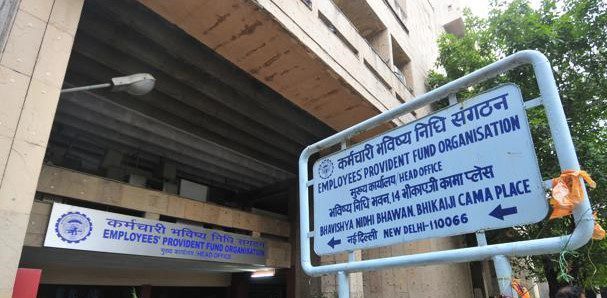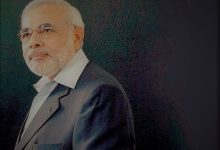The Employees’ Provident Fund Organisation (EPFO) investment in equities via exchange-traded funds (ETFs) generated 17.23 percent return as of February this year. It had invested Rs 41,967.51 crore in ETFs. EPFO had sold ETFs worth Rs 2,500 crore in March. Unfortunately, stock prices have dipped since then. A report, for Different Truths.
It is good to know that the Employees’ Provident Fund Organisation (EPFO) investment in equities via exchange-traded funds (ETFs) generated 17.23 percent return as of February this year. It had invested Rs 41,967.51 crore in ETFs. EPFO had sold ETFs worth Rs 2,500 crore in March. Unfortunately, stock prices have dipped since then. For instance, an individual investment in a major private pension fund such as HDFC Life,
which was valued at Rs.15,03,673 as on January 29, 2018, lost its value to Rs.14,56,976 on June 23, 2018, as the market dipped. Anyway, EPFO’s investment in ETFs is not large compared to the total fund at its disposal. An ETF comprises a clutch of stocks that reflect the composition of an index, such as the S&P CNX Nifty or BSE Sensex, and are traded on stock exchanges like company stocks. EPFO has a total corpus of about Rs.9,00,000 crore. The average incremental flows into the kitty every year are of the order of Rs.1,00,000 crore. That is a huge sum. EPFO has to decide on what portion of its funds is safe to play with in the highly volatile Indian stock market. EPFO must study in depth the potential of India’s stock markets and the risk factors. After all, this money belongs to industrial workers, many of whom are still subjected to get a minimum pension of as little as Rs.1,000 each per month, even after its last upward revision by the
present government.
Investments in stocks in India are high-risk operations. Large listed good profit-making, dividend-paying companies are not many. The bottom-line of most of the listed mid-cap companies is below the expected level. Increasing competitions within the industry and from cheap imports keep domestic corporate bottom-line under pressure. Fewer listed companies show impressive results in terms of earnings per share (EPS). On an average, market price of shares or their profit-earning (PE) ratio far outstrips EPS. Valuations of
companies, based more on future outlook, are often inflated. The Indian stock market is over 70 percent controlled by foreign portfolio investors (FPIs). They love to gamble more on market ‘sentiments’ than play by real worth of shares. Few equity mutual funds offer returns that are well above the rates offered under debt instruments, going by the duration of investment. A mutual fund investment rarely start earning returns before four to five years. The market is often under pressure when FPIs exit.
EPFO started investing in ETFs in August 2015. This amounted to five percent of investible deposits in 2015-16, rising to 10 percent, next year, and 15 percent, last fiscal. Under the union labour ministry’s new plans, EPFO subscribers may soon get the option to invest more of their retirement contribution in stocks to ostensibly earn higher returns. EPFO, boasting a history of over six decades, has more than 50 million
subscribers. Until recently, it used to invest only in safer debt instruments, or fixed income securities. EPF subscribers on an average received around nine per cent interest for several years, in the past. It is true that return from any long-term pension fund should be much higher. And, that can be achieved if the PF organisation participates in equity markets. However, where the equity market itself is small, as it is in India, and the market is too hot, investment in equities of workers’ savings could be quite risky.
While EPFO can play in the market at best upto 15 per cent of its fund, it must find other opportunities to earn decent and safe returns for its subscribers.
In fact, the government should first help the stock market grow in shape and size, before betting large funds on it. Most large foreign firms, having big presence in India in terms of turnover and profit, operate as unlisted companies. Their presence in the stock market could have provided a much wider option before investors and improve market reliability. The current losing run in the stock market is led by mid- and small-cap shares, which continue to fall sharper than blue chips as investors’ aversion to risk heightened in the wake of the Rupee crashing to an all-time low. The BSE SmallCap index has slipped deeper into a bear market territory with the measure falling over 20 percent from its January highs after the 1.5 percent drop on Thursday, last week. An index is generally considered to be in a bear market territory when it falls 20 percent from its recent highs. The SmallCap index is down 22 percent from its all-time high of 20,183.45 in January, this year. This is only to say that the Indian stock market is no safe haven for betting large chunks of workers’ savings.
The country’s workers have long been receiving lukewarm treatment from the government on the social security front. The services sector forms the biggest part of the economy. Most of the workers in this sector are not even covered under the PF scheme. Their employers take advantage of the contract labour system. The history of the EPFO scheme over the last 20 years shows that the EPF interest rate barely covered the retail inflation rates. In 1997-98, the EPF interest rate was 12 percent while the retail inflation soared to 13.17 percent. In 2001-02, the EPF interest rate slipped for the first time below 10 percent. Between 2005-06 and 2009-10, the interest rate stagnated at 8.5 percent irrespective of the consumer price inflation. The retail price inflation was much higher than the ETF interest rate in 2008-09 and 2009-10 and again in 2011-12 and 2012-13. The falling Rupee and macro-economic indicators suggest that retail inflation by the
year-end will exceed the PF interest rate.
Nantoo Banerjee
©IPA Service
Photo from the Internet





 By
By

 By
By
 By
By